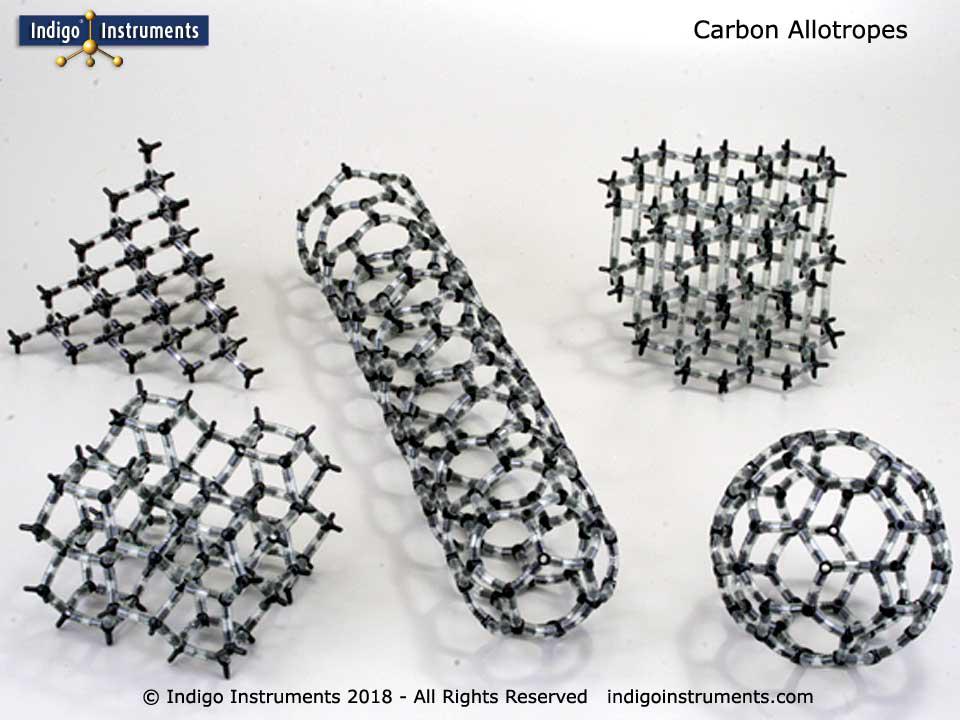Carbon Allotropes-5 Models
SKU: 68620W
This carbon allotrope kit has 5 models: a nanotube & buckyball; 3 layer graphite (which can be built as the alpha or beta form); diamond; & body centered tetragonal for only $129.95. Note that body centered tetragonal is theoretical & is included to represent the many hypothetical forms that have been postulated.
For more information on the forms in this kit and others such as graphenylene, chaoite, & metallic carbon, see Allotropes of Carbon.
Indigo Instruments has maintained a substantial inventory of genuine Cochranes of Oxford (Orbit) parts for 30+ years and are compatible with every molecular model kit we have sold. This level of quality may appear expensive but no parts support from other vendors costs even more.
Thanks for the feedback. Because these compounds are all lattice structures with repetitive unit cells, we felt that a picture was actually simpler to follow than written instructions. Perhaps adding some stereo pairs would be better. The bonds are indeed very stiff on first use. We have tried softer as well as harder ones but these are the best tradeoff. They provide long term durability as well as ensuring structural integrity. The simplest solution actually is to put the bonds in your pocket for 10-15 minutes before first use to soften them up.